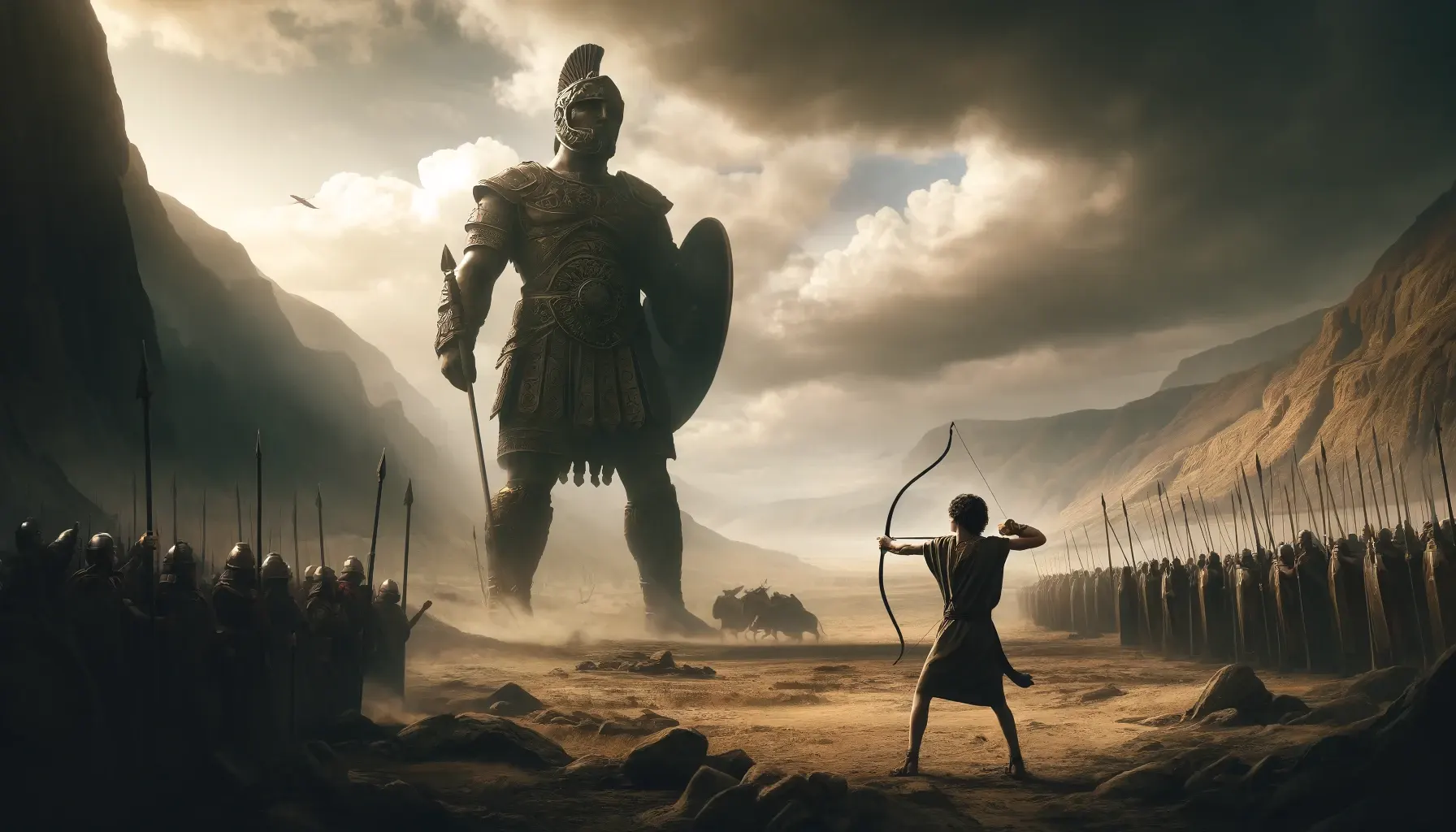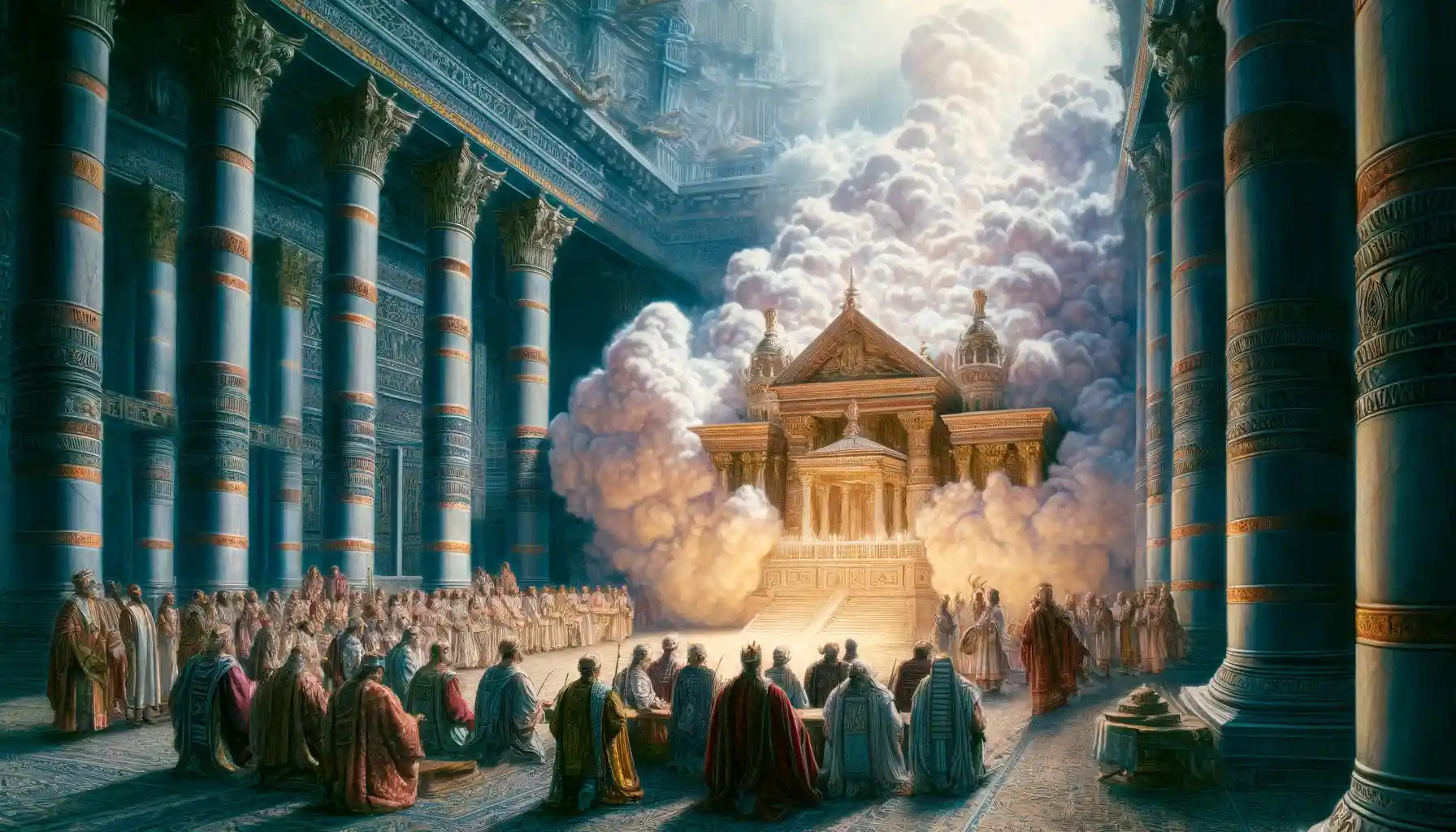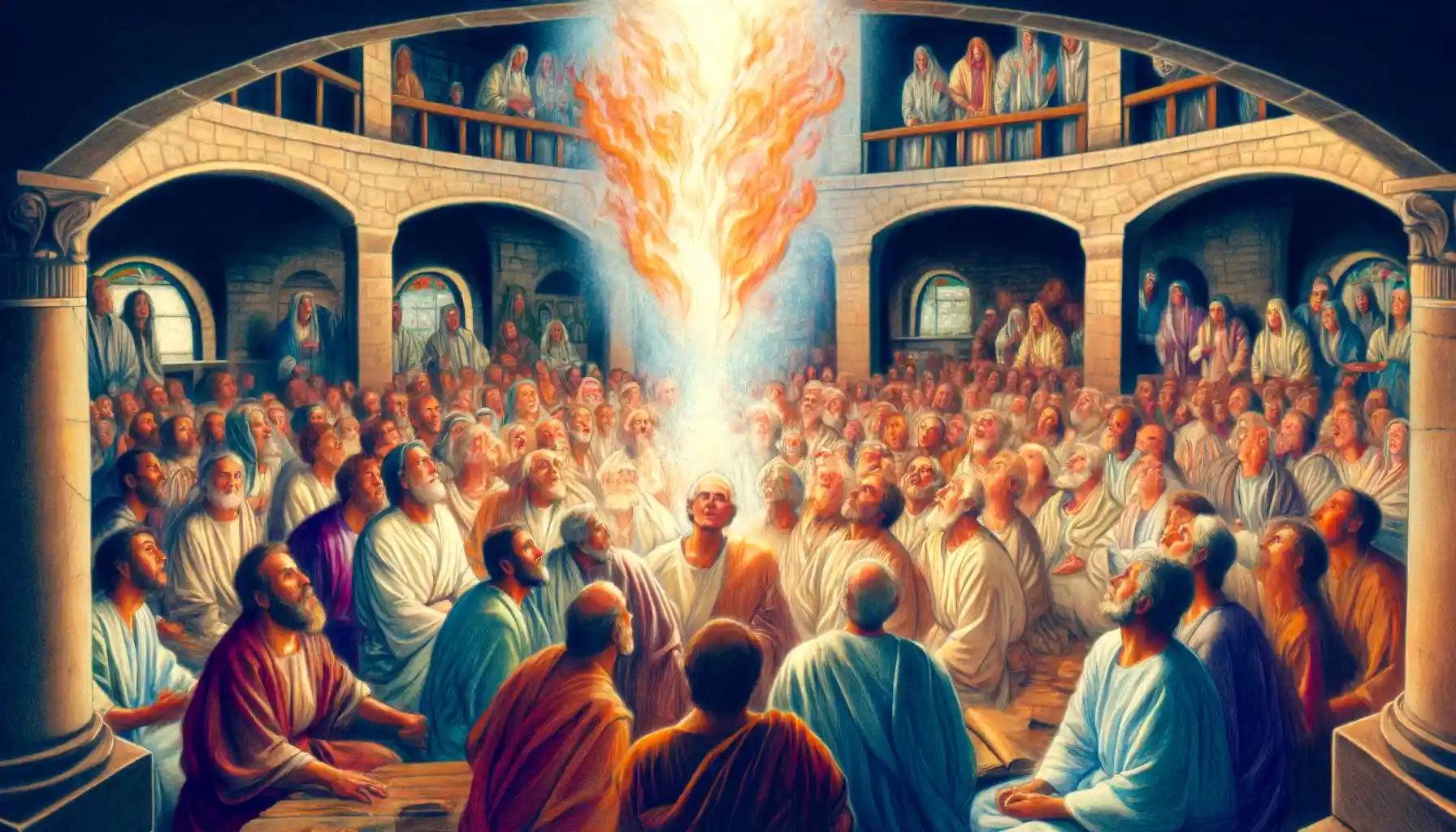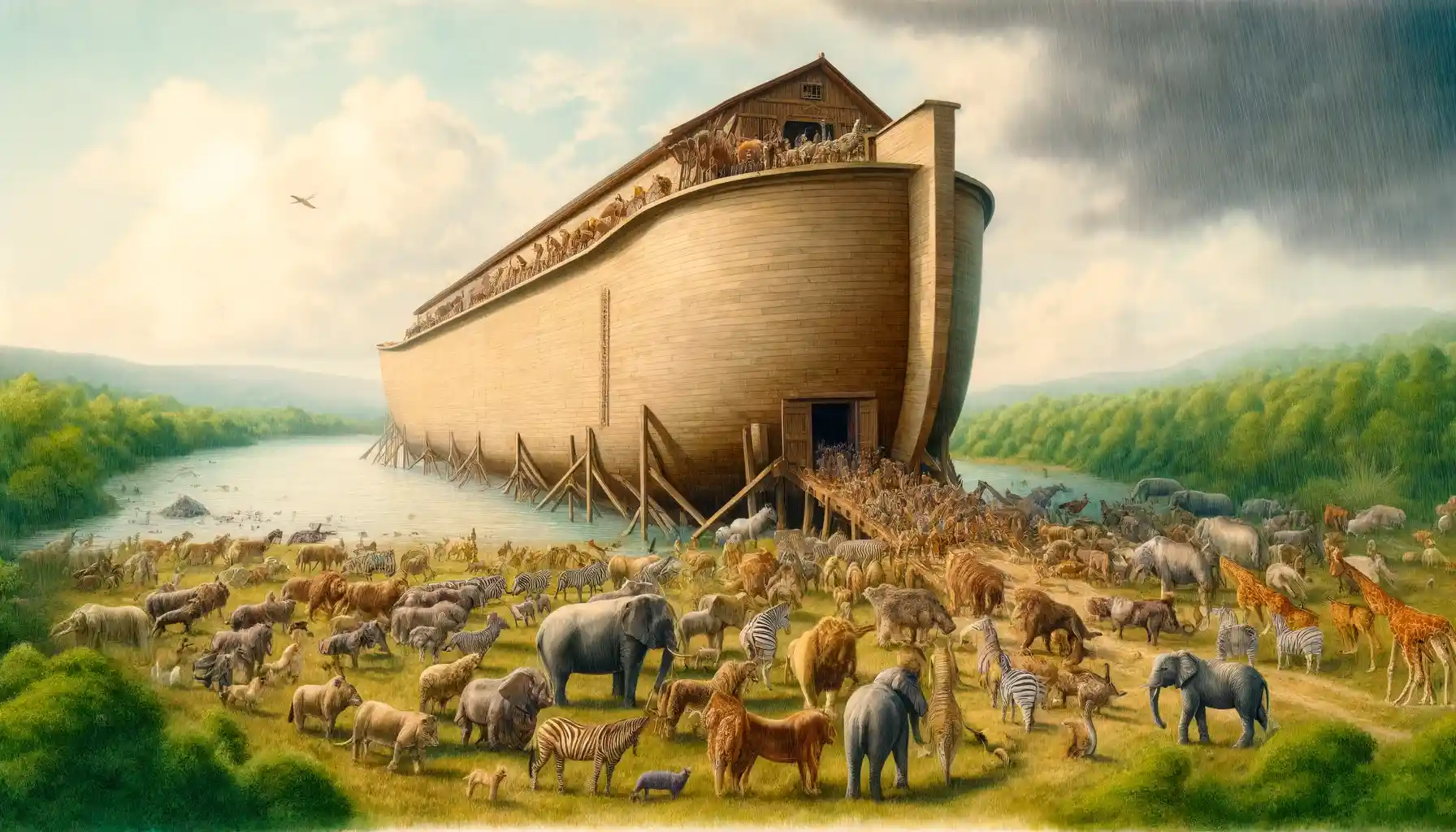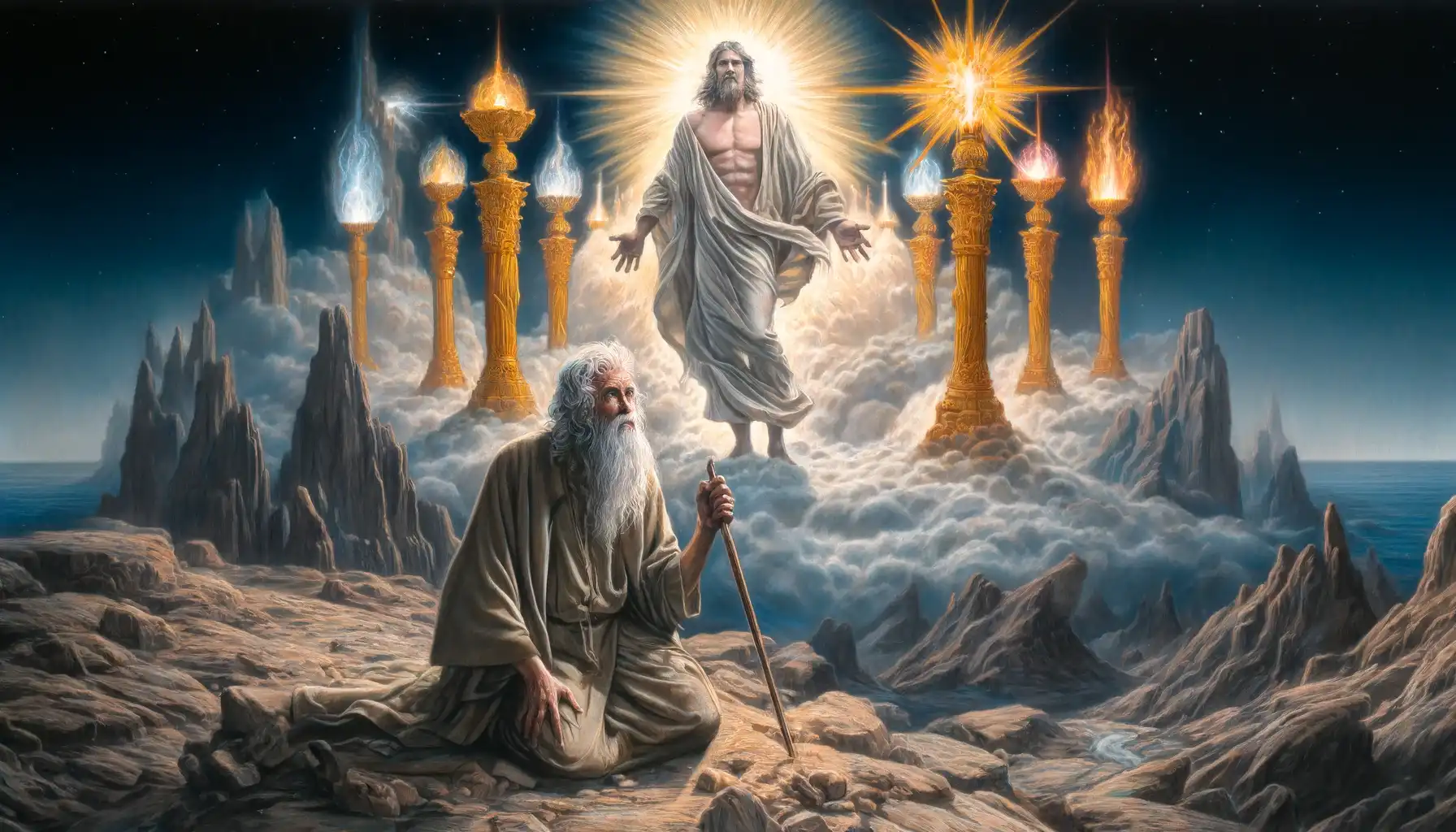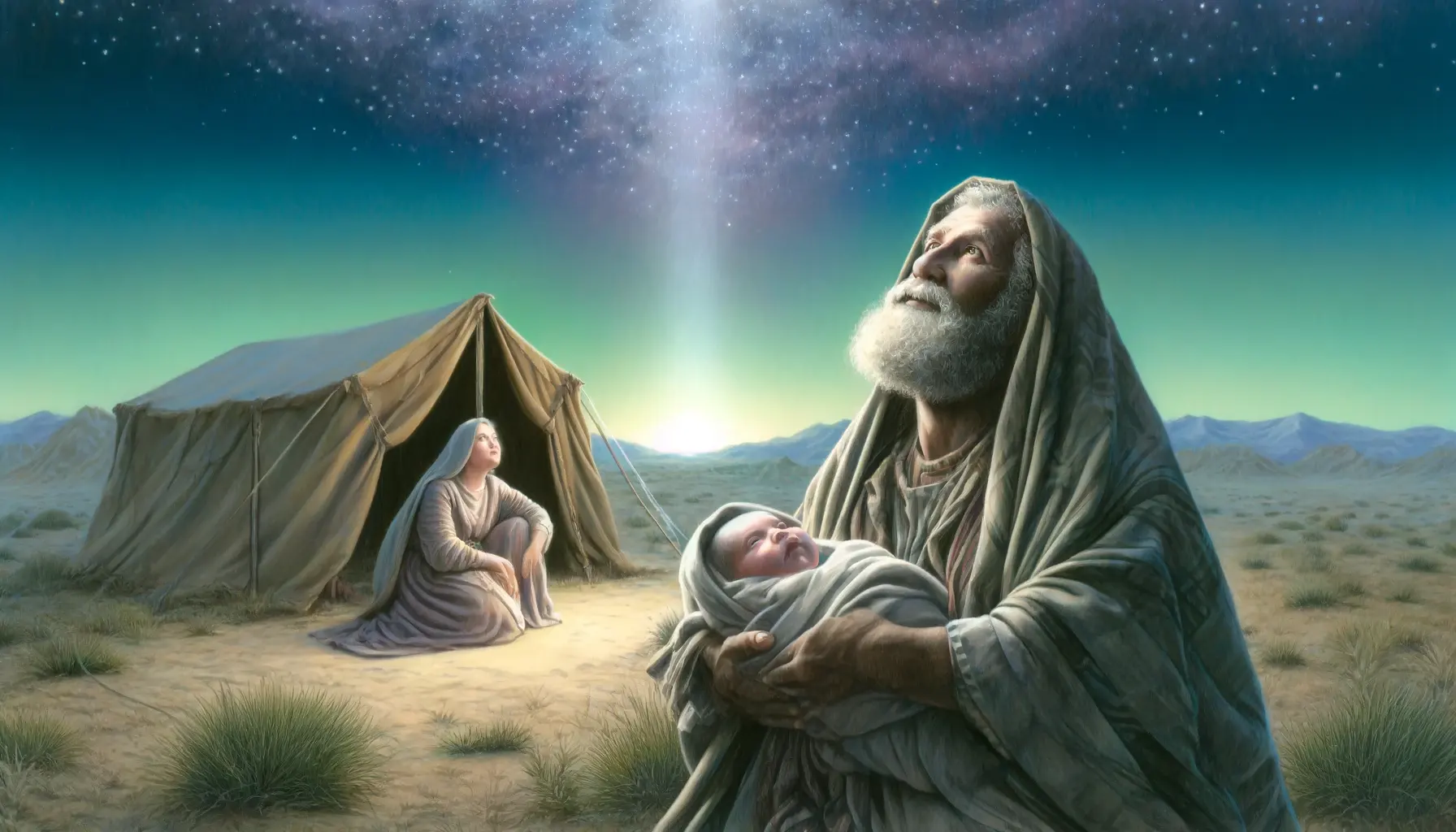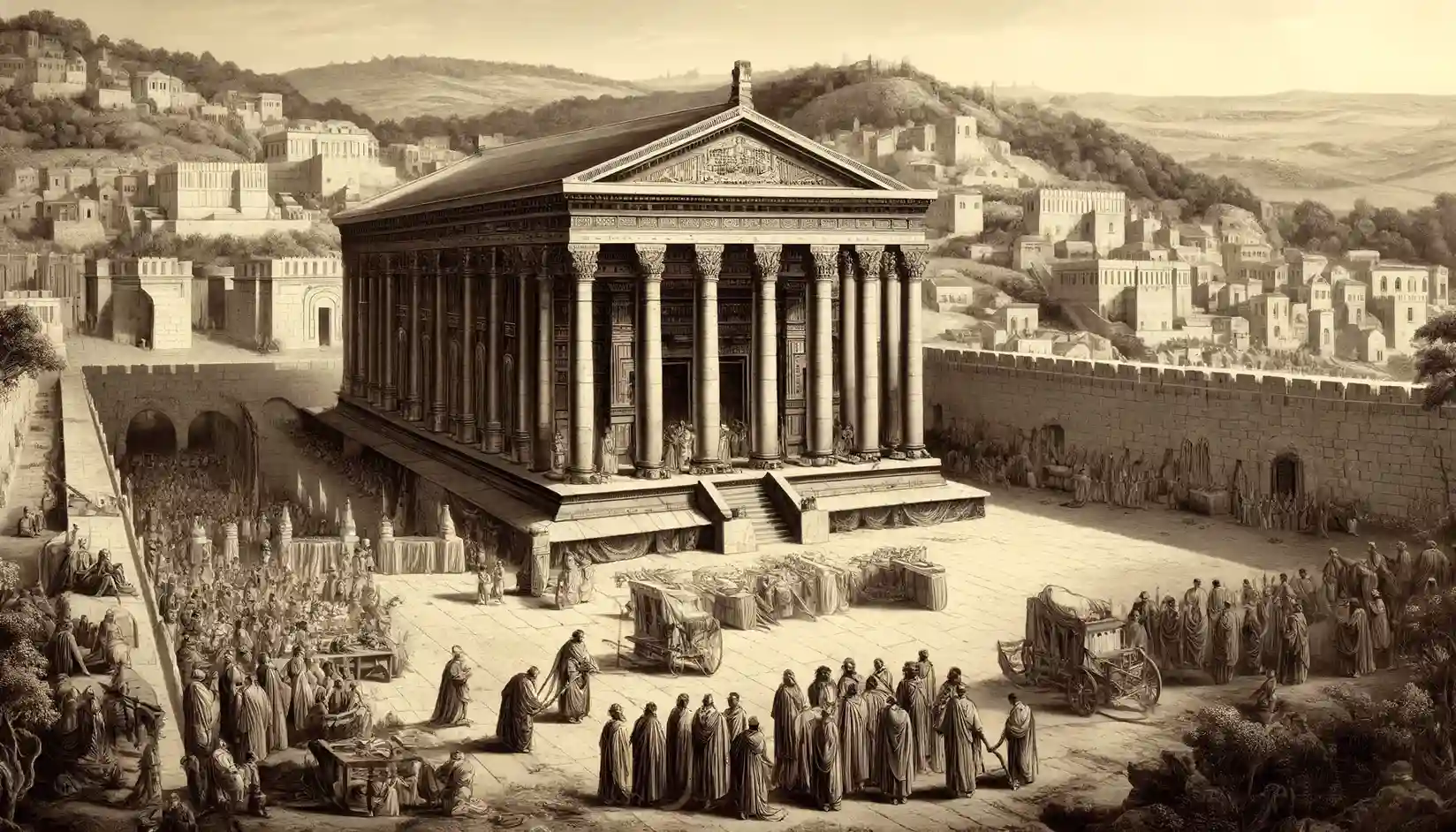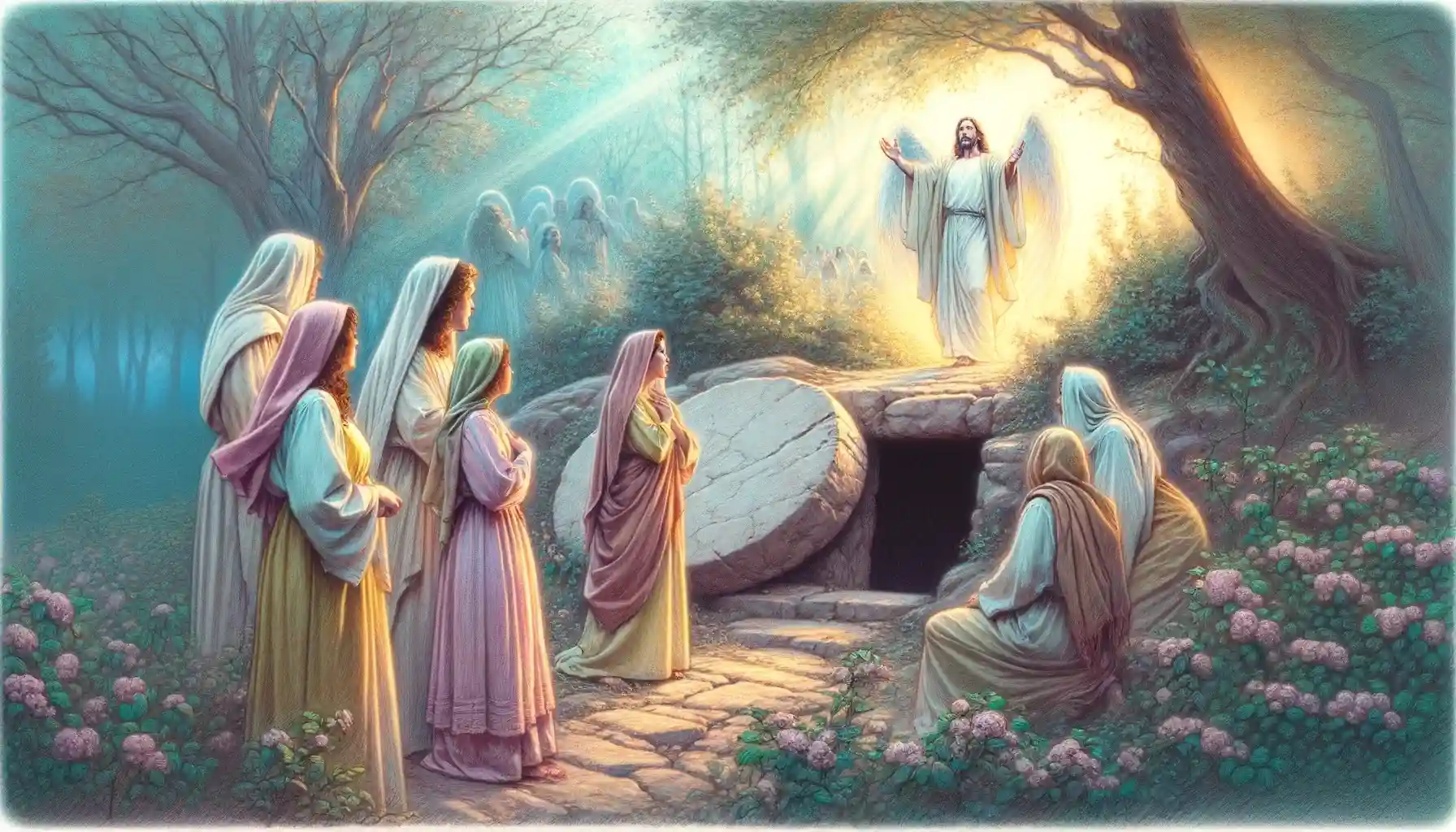In Acts 9:1-19, Saul’s journey to persecute Christians in Damascus is interrupted by a divine encounter with Jesus, leading to his temporary blindness, restoration of sight through Ananias, and his subsequent conversion and baptism, transforming him into Paul, a devoted apostle of Christ.
The image showcases a dramatic landscape scene depicting the biblical confrontation between David and Goliath in the Valley of Elah, with David swinging his sling at the towering Goliath, as both armies watch in suspense.
In 1 Kings 8:10-13, the dedication of Solomon’s Temple is highlighted by the filling of the sanctuary with a cloud, representing God’s glory, which halted the priests in their service, and Solomon’s acknowledgment of God’s presence in the temple, fulfilling divine promises.
Genesis 1 offers a foundational narrative in the biblical text, presenting a structured and symbolic account of the world’s creation by God. This chapter not only serves as a theological statement about God’s power and sovereignty but also sets the …
In the biblical narrative of Noah’s Ark and the Flood, detailed in Genesis chapters 6 through 9, God decides to cleanse the earth of its pervasive wickedness by sending a catastrophic flood, sparing only Noah, a righteous man, his family, and representative animal species who survive in a divinely instructed ark, leading to a renewed covenant symbolized by a rainbow.
In Revelation 1:9-19, John narrates his experience of being in the Spirit on the Lord’s Day when he hears a great voice like a trumpet and turns to see the glorified Christ standing among seven golden lampstands, which symbolize the seven churches.
Isaac, whose birth to the elderly Sarah and Abraham was foretold by God, represents a miraculous fulfillment of divine promise and a key figure in the continuation of the Abrahamic covenant.
The Rebuilding of the Temple, specifically the Second Temple in Jerusalem, commenced after the Jewish people’s return from the Babylonian Exile, initiated by the decree of Cyrus the Great of Persia in 538 BCE, faced numerous challenges and delays, but was ultimately completed in 516 BCE during the reign of Darius I, symbolizing a pivotal moment of religious and cultural renewal for the Jewish community.


